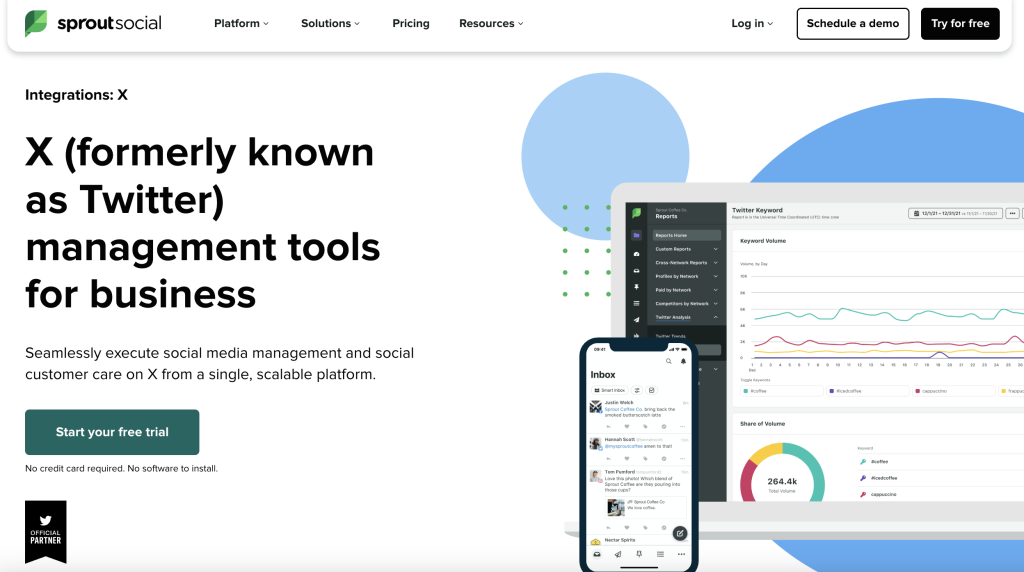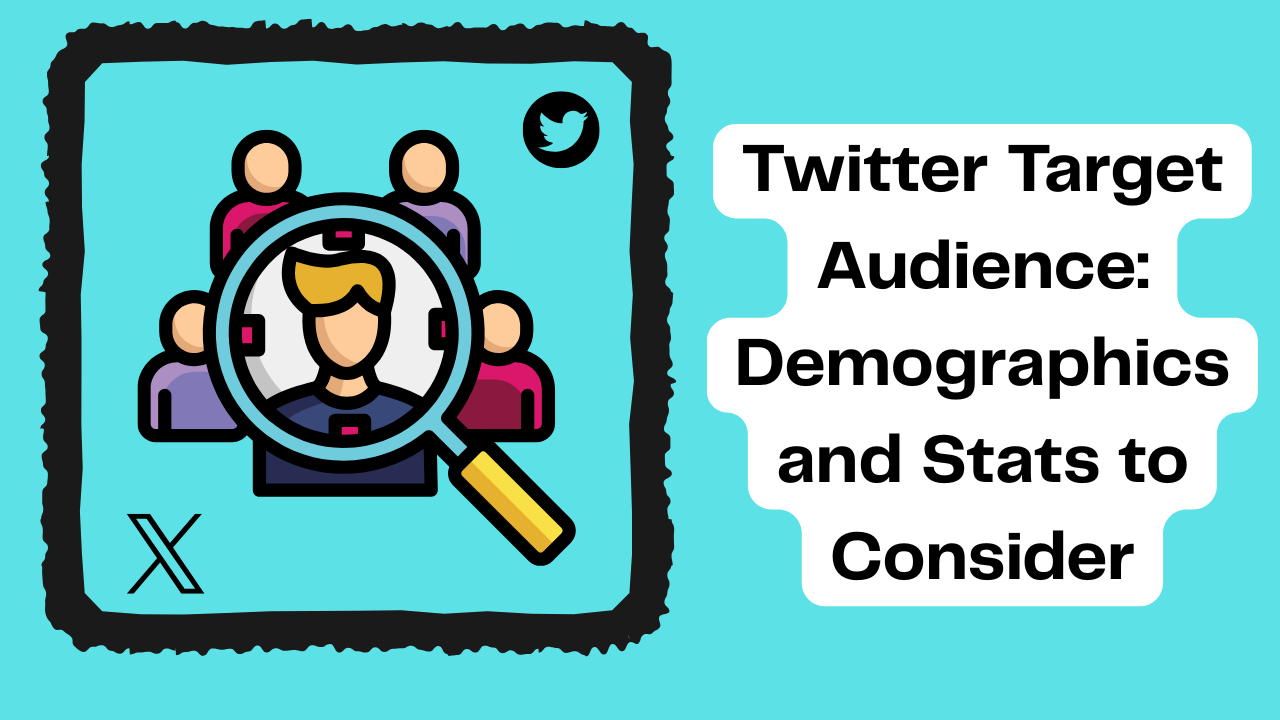If you’re creating content or running a business on Twitter (now known as X), knowing your Twitter target audience can make or break your growth strategy.
You can’t just post and hope for the best. To build Twitter engagement, drive clicks, and attract the right followers, you need to understand who’s on X, what they care about, and how they interact with content.
In 2025, Twitter continues to be a hotspot for conversations around news, entertainment, tech, finance, and lifestyle. But audiences are more segmented than ever.
That’s why analyzing your followers’ demographics: their age, gender, location, and interests, which all help you tailor your tweets and ad campaigns for better engagement and Twitter monetization.
Why Are Twitter Demographics Stats of Creators and Users Important?
Understanding Twitter demographics helps you post smarter, not harder. When you know who you’re talking to, every tweet, reply, and ad becomes more targeted and effective.
Here’s why these stats matter:
- Better content alignment: You can create content that speaks directly to your followers’ interests.
- Improved ad performance: Demographics guide your Twitter ad costs through targeting to maximize ROI.
- Community building: Understanding your audience’s values and tone helps create a loyal fanbase.
- Strategic partnerships: Brands and creators can collaborate more effectively when they know who their followers are.
In short, demographics data lets you build a brand that resonates with the people who are most likely to engage, follow, and buy.
How to Understand the Twitter Demographics of Your Target Audience
There are several tools that make it easier to learn who’s behind your follower count. Let’s look at a few.
Twitter Analytics

Twitter’s analytics dashboard is built in and offers free insights into your audience’s demographics. You can view data about gender, location, interests, and engagement trends.
These insights are useful for tracking growth and identifying which types of posts attract the most attention.
Twitter Ads Platform

If you’re running ad campaigns, the Twitter Ads dashboard provides advanced demographic data. It helps you target users based on age, gender, location, language, device, and even the accounts they follow.
You can also compare different audiences and see which segment drives the best engagement or conversions.
Third-Party Tools
Platforms like Sprout Social, Hootsuite, or Brandwatch offer deeper analytics beyond Twitter’s native tools. These tools analyze your followers’ behavior, sentiment, and interests.

Some even use AI to predict which times or hashtags will maximize visibility.
Using a mix of these tools ensures you’re not guessing and that you’re using data-driven insights to grow strategically.
How to Analyze Twitter Demographics
Analyzing Twitter demographics involves more than looking at charts. You need to connect the dots between who your audience is and how they behave online.
Start with these key metrics:
- Age distribution: Understand what generation dominates your following (Gen Z, Millennials, Gen X).
- Location data: See where most of your followers live to tailor posting times.
- Gender breakdown: Understand the balance of your audience for more inclusive messaging.
- Interests and hashtags: Identify what topics get your audience talking.
- Engagement rates: Track which demographics interact the most.
Once you have these insights, use them to refine your tone, visuals, and ad targeting.
How to Use Demographic Data For Content Strategy
Knowing your audience demographics isn’t just for reports; it should shape your content strategy.
Here’s how to use it effectively when planning:
- Match tone and style: If your audience skews younger, use humor and trends. For professionals, focus on insights and thought leadership.
- Post at optimal times: If most followers are in North America, schedule posts for mornings or early afternoons.
- Highlight regional topics: Use trending hashtags and local issues to boost engagement in key locations.
- Adjust visuals: Age and gender insights can guide your design choices, color palettes, and themes.
- Experiment with formats: Video content may perform better among younger users, while polls and threads engage older audiences.
The more aligned your content is with your audience’s behavior, the faster your engagement grows.
25+ Twitter Demographics Stats That Every Brand Must Know

General Stats
Let’s start with a snapshot of Twitter’s global audience in 2025:
- Twitter has over 540 million active users worldwide.
- Roughly 63% of Twitter users identify as male, while 37% identify as female.
- Around 70% of users access Twitter daily.
- The average time spent per session is about 5.3 minutes.
- Over 80% of users access Twitter via mobile devices.
- Twitter’s largest audience segment is aged 25–34, representing about 38% of users.
- U.S. users make up roughly 25% of Twitter’s total audience.
These stats show that Twitter remains a platform where younger, tech-savvy audiences thrive, which is ideal for brands targeting professionals, creators, and online communities.
Twitter Demographics Age

Age is one of the most important demographic factors for creators and marketers. As of 2025, Twitter’s audience by age looks roughly like this:
- 13–17 years: 6%
- 18–24 years: 17%
- 25–34 years: 38%
- 35–49 years: 27%
- 50+ years: 12%
Millennials and Gen Z dominate the platform, making it perfect for creative, fast-paced, and trend-driven marketing.
If your brand’s audience is in their 20s or 30s, Twitter offers strong visibility and engagement potential.
Twitter Location Demographics by Country
Knowing where your followers live helps tailor your message and posting schedule. The top Twitter audiences by country include:
- United States: 25%
- Japan: 18%
- India: 8%
- Brazil: 6%
- United Kingdom: 5%
- Indonesia: 4%
- Saudi Arabia: 3%
If your brand is global, it’s important to know that the majority of Twitter users are based in the US with a slight spread in a few other key countries.
You can localize content or run region-specific promotions to capture different audience segments more effectively.
Twitter Audience Demographics
The Twitter audience skews slightly older than TikTok’s and more professional than Instagram’s.
Many users are entrepreneurs, journalists, tech enthusiasts, or business owners.
Roughly 42% of Twitter users have a college degree or higher, and 60% report an above-average income.
This makes Twitter an excellent platform for B2B marketing, thought leadership, and building brand authority through authentic conversation.
Twitter Demographics: Gender
Gender demographics can help shape both tone and visuals in your campaigns. In 2025:
- 63% of users identify as male
- 37% identify as female
- A small but growing number of users identify as nonbinary or prefer not to disclose
For brands and creators, this means tailoring language to appeal broadly, focusing on value-driven, inclusive messaging that resonates across demographics.
Twitter Follower Demographics
Your follower demographics reflect who you attract and who’s most engaged with your content. You can view follower insights directly in Twitter Analytics.
Look for these metrics:
- Top locations: Where your followers live.
- Top interests: What topics or industries they follow.
- Device type: Helps you optimize visuals and video formatting.
- Engagement frequency: Who interacts with your tweets most often.
For example, if your followers mostly come from the U.S. and engage with marketing content, you’ll know to schedule posts during U.S. working hours and focus on growth-related topics.
Twitter Demographics Analytics
Twitter Analytics is your best friend for ongoing audience tracking. Beyond follower stats, it provides metrics like impressions, profile visits, mentions, and top-performing tweets.
You can use this data to:
- Identify your highest-engagement demographics.
- Refine which types of tweets perform best.
- Adjust ad targeting for maximum ROI.
- Understand seasonal or regional engagement spikes.
Analyzing monthly or quarterly helps you stay updated as trends and audiences shift.
Choosing the Right Twitter Target Audience

Choosing your Twitter target audience means balancing data with intuition. Demographics tell you who your audience is, but your content and brand voice define why they follow you.
Ask yourself:
- Who benefits most from my content or product?
- What age group do they belong to?
- Where do they live and when are they most active?
- What kind of language or humor do they respond to?
- Which hashtags and trends do they engage with?
Once you’ve identified this profile, use it to guide every piece of content and ad you create.
For instance, a SaaS company might target 25–40-year-old professionals in North America and Europe, while a beauty influencer might focus on 18–30-year-old women in English-speaking markets.
The clearer your audience profile, the stronger your growth and engagement.
Summing Up
Understanding your Twitter target audience is the foundation of success for creators and businesses.
When you know who your followers are, their age, gender, location, and interests, you can create content that resonates and drives results.
Use analytics tools regularly, stay updated on platform trends, and adjust your strategy as your audience evolves.
The most successful Twitter creators don’t just tweet: they listen, learn, and adapt to their audience’s behavior.
FAQs: Twitter Target Audience Demographics
1. What Is Twitter’s Biggest Demographic?
Twitter’s largest demographic in 2025 is users aged 25–34, representing around 38% of the platform’s audience.
2. Who Is the Target Audience of Twitter?
Twitter’s audience is largely composed of professionals, creators, and enthusiasts who follow news, tech, entertainment, and culture trends in real time.
3. What Is the Primary Demographic of Twitter?
The primary demographic skews male, aged 25–49, often with higher education and income levels compared to other social platforms.
4. What Are the Demographics of Twitter Marketing?
For marketing, Twitter’s audience is ideal for brands targeting tech-savvy professionals, Gen Z and Millennial buyers, and thought-leadership content consumers.
5. What Age Demographic Uses Twitter the Most?
The 25–34 age group remains the most active on Twitter, followed by users aged 35–49, making it a key audience for business and creator growth.


